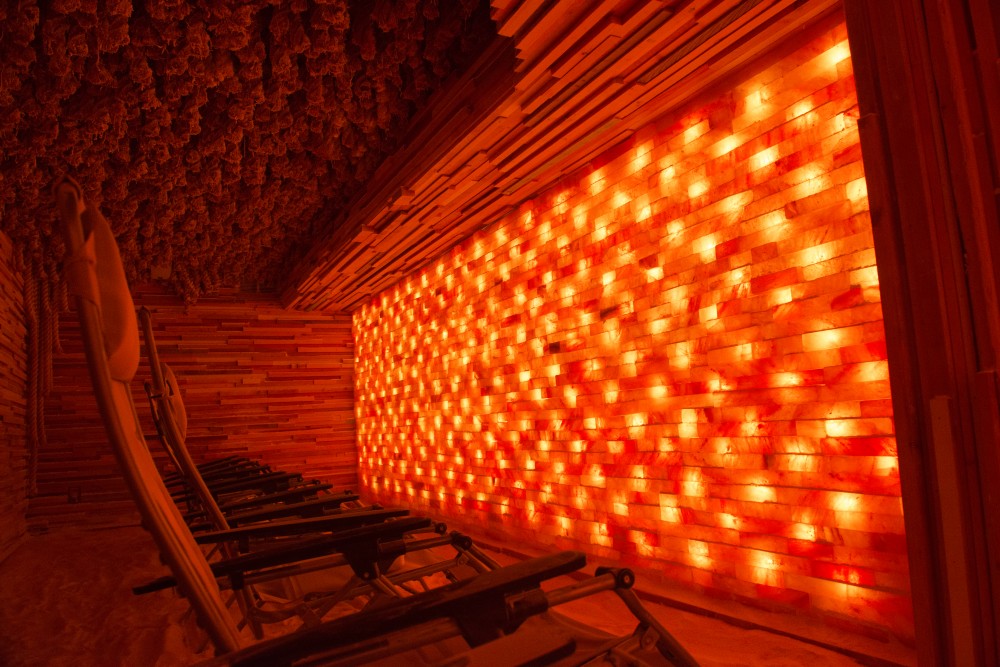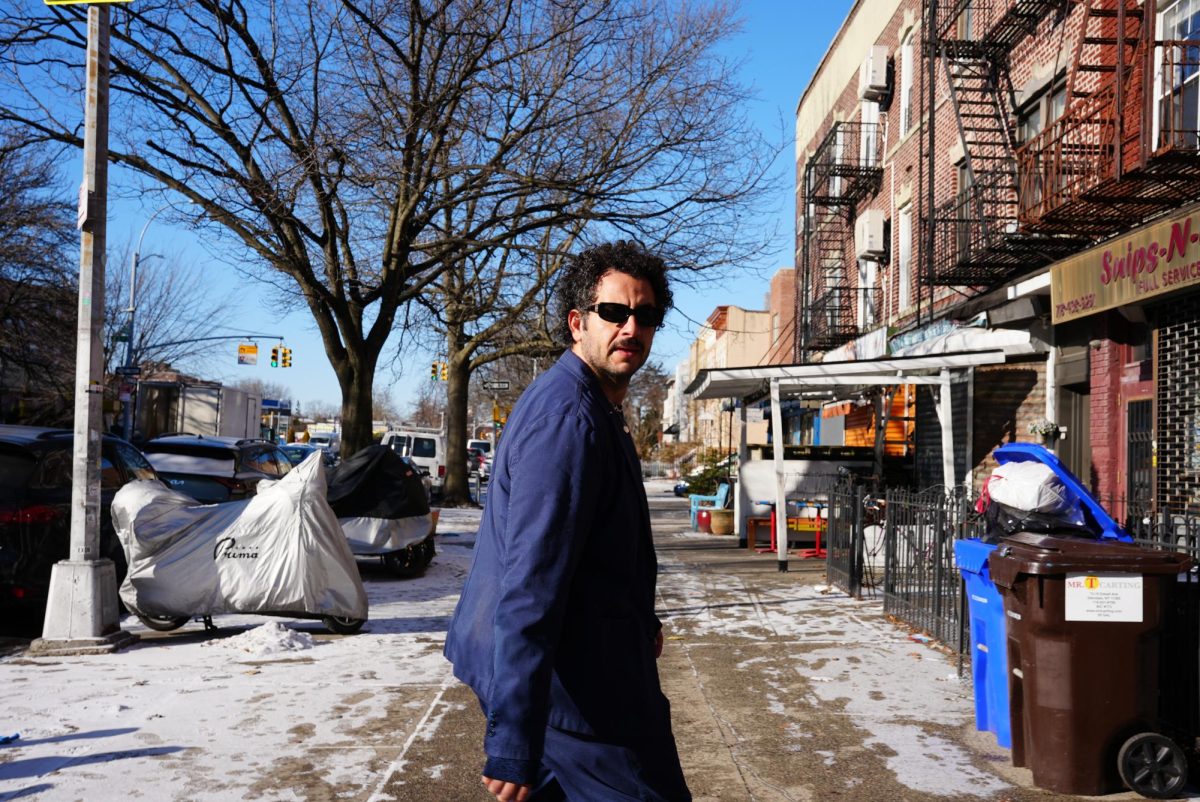Lying down shoulder-to-shoulder with strangers in a cave made from granulated Himalayan salt is not the most conventional way to spend a Thursday night.
Looking up, you see large chunks of the pink salt affixed to the walls. You feel the salt that covers the cave’s heated floors like sand. The air is filled with dry aerosol that contains tiny salt particles treated by a specialized halogenerator.
Too much sodium in your diet can be a bad thing, but an experience at The Salt Cave Minnesota makes salt seem healthy for once. The first of it’s kind in the Twin Cities, The Salt Cave offers salt therapy — sometimes called halotherapy — to the local community.
Though there is no concrete proof regarding the benefits of salt therapy, The Salt Cave’s website claims it has the power to reduce a host of ailments from asthma, allergies and bronchitis to anxiety, sleep disorders and depression.
Located at 4811 Nicollet Ave. S., the Salt Cave’s lobby is filled with Himalayan salt lamps radiating blush-toned light, an orange shag carpet and a peach-colored desk.
At the desk sits owner Scott Wertkin, peering from behind his large orange MacBook and checking people in.
Wertkin and his wife, Jenni, opened The Salt Cave in 2012 after seeing a news program about salt therapy while on vacation in Florida.
He knew then that he wanted to recreate something similar in Minneapolis.
After researching salt therapy, Wertkin crafted the Minneapolis salt caves himself, using more than six tons of Himalayan salt imported from the Khewra Salt Mine in Pakistan.
Katy Paquette and Tara Cantwell, graduate students at St. Catherine University, tried their first class at The Salt Cave last Thursday.
Both of them had experiences with meditation in the past, but the class held at The Salt Cave provided a different atmosphere.
“I think I was a lot more aware of my breathing,” said Cantwell, who teaches yoga in her spare time. “It made me more cognizant of my inhales and my exhales.”
Paquette said she enjoyed the experience because it transported her to a place away from the rainy, chilly Minneapolis evening.
“It was like walking onto the beach – completely different from anything here in Minnesota,” she said.
Sarah Smriga taught last Thursday’s “Salt + Sound” class. Smriga discovered reiki and meditation during her freshman year at The College of St. Benedict — she said it was her salvation.
After graduating, she spent years working as a TV producer in both Los Angeles and Minneapolis.
“I wanted something besides a glass of wine or a martini to calm me at night. I was looking for something to take the edge off,” Smriga said.
Eventually, Smriga traded in her fast-paced life in broadcast journalism to become a meditation instructor full-time.
Smriga used singing bowls to relax the class as she took the group through guided meditation. Though this is not an uncommon practice, teaching at The Salt Cave provided a special setting.
“It brings this negative ion environment to you,” Smriga said. “There are healing properties to it that of course are not scientifically proven – there aren’t enough studies done that we can say that. But it does help people’s skin, it helps the respiratory system, it helps the immune system.”
However, “healing properties” can come at a price. Most 45-minute classes at the Salt Cave range from $30 to $35. Memberships can also be purchased for one month at $250, three months at $200 per month and six months at $150 per month.
“I know it’s hard to sometimes participate in a lot of relaxation activities that come with a price when you’re a college student,” Cantwell said.
Paquette agreed, but said that coming to a place like The Salt Cave could be beneficial “even if it’s not something that you can do every week or every month.”
Speaking from her own experience, Smriga said that coming to a class at The Salt Cave could help relieve students from stress.
“It’s great to come to one class and then if you can find a way to have a consistent practice – maybe you can’t always get to The Salt Cave – but if you can take some of the techniques back with you on campus, it can really help,” Smriga said.
Wertkin says he has encountered plenty of salt cave skeptics in his line of work. He hopes that salt therapy will become more legitimate in the public eye, like acupuncture or chiropractic treatments.
“I think there’s lots of things going around about the Himalayan rock salt right now … like ‘is it real?’ or is it this ‘woo hoo’ thing of holistic health,” Paquette said.
“It’s really worth discovering it on your own and trying it before you discount it. To see if it just makes you feel the way you want to feel.”









